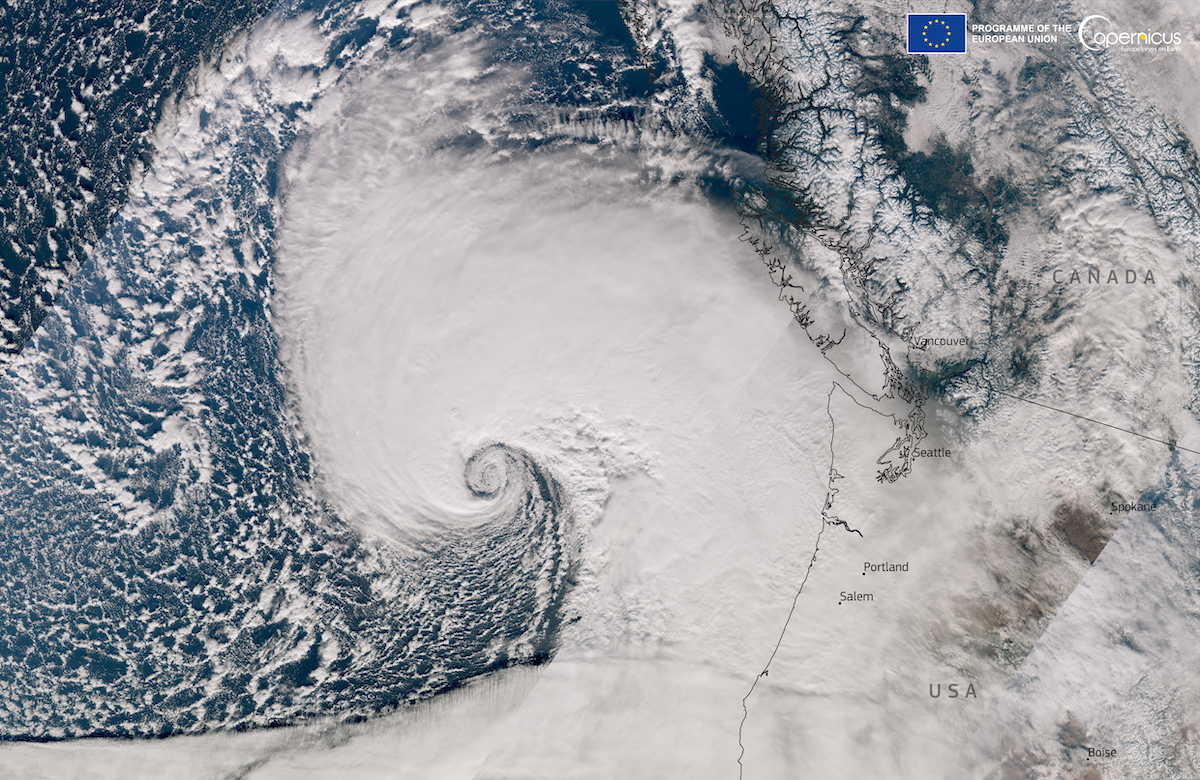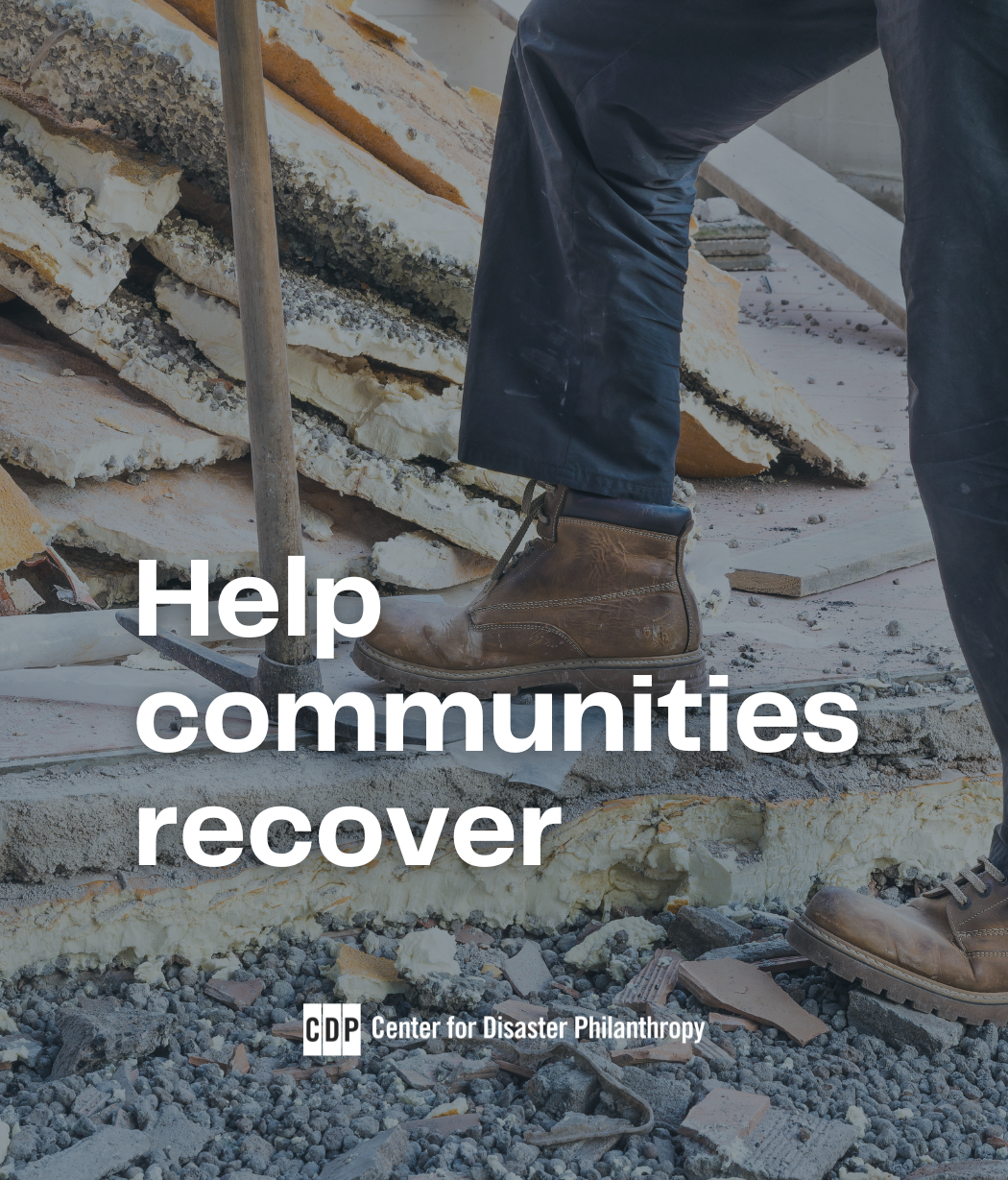What we’re watching: Weekly disaster update, November 25

We know all too well that disaster can strike anytime, anywhere in the world. Some disasters make headlines; others do not. Here at the Center for Disaster Philanthropy (CDP), we monitor the status of disasters worldwide and compile a list of the ones we’re tracking weekly, along with relevant disaster-related media coverage.
Here’s what we’re watching for the week of Nov. 25, 2024.
New or Emerging Disasters
Landslides – Indonesia: On Saturday, Nov. 23, torrential rains in Indonesia caused massive landslides on Sumatra Island, killing 16 people, burying homes and destroying farms. The floods injured dozens of people, and at least six are still missing.
Flash floods continued on Sunday and Monday, devastating villages and farmland. Rescue efforts to find missing persons are ongoing as of Nov. 25.
Severe Storms – Multiple states: A ‘bomb cyclone,’ or ‘winter hurricane,’ struck the west coast on Nov. 19 with powerful winds and rain, killing two people in Washington state and two in California. The storm downed trees, damaged infrastructure and caused “the largest blackout in Washington since 2006.”
Parts of California received 20 inches of rain, causing at least 20 landslides. Wind gusts exceeded 70 mph, causing power outages and downed trees. Vineyards flooded, and homes were damaged. Parts of northern California are also seeing blizzard conditions associated with this storm.
Previous/Ongoing Disasters
Flooding – South Sudan: As of Nov. 15, about 1.4 million people remain affected by flooding in South Sudan, and 379,000 continue to be displaced by flooding in 44 counties.
With limited access to sanitation and clean water due to the flooding and inflows from Sudan, there has been a sharp rise in cholera. Flooding has also contributed to the food shortage crisis in South Sudan, with nearly half the population, or 6.3 million people, facing food insecurity.
Emerging epidemics – Multiple countries:
Mpox – In August, the World Health Organization declared mpox a public health emergency as Clade I, a newer, more severe strain, has spread in parts of Africa.
In 2024, mpox cases have rapidly risen, specifically in the Democratic Republic of Congo (DRC). Since Jan. 1, there have been 9,000 confirmed cases in DRC and more than 40 confirmed deaths, although the number of suspected cases and deaths is much higher, according to the CDC.
As of Nov. 1, 2,368 cases of the less severe strain of mpox were reported in the U.S. during 2024. However, the risk to the public remains low. A vaccine is now available to prevent mpox for people with risk factors for contracting the disease or those traveling to countries with the more severe Clade I strain.
Oropouche – There has been a sharp increase in oropouche cases in 2024. So far, 10,000 cases have been reported, mostly in Brazil. For reference, the total number of cases recorded in Brazil from 2015 to 2022 was 261. The virus is caused by a bite from a mosquito or a midge (an insect small enough to fit through window screens). It can also be transmitted sexually and from a pregnant woman to her baby.
So far, most cases are located in South America and the Caribbean, but it is too early to tell whether a global outbreak will be of concern.
From the World Health Organization website, “The Pan American Health Organization (PAHO) – the World Health Organization Regional Office for the Americas – in collaboration with WHO Member States, is actively monitoring the epidemiological situation of Oropouche virus disease. PAHO conducted a rapid risk assessment (RRA), which indicated a high regional risk due to the increasing number of cases, their expansion into new areas, recently reported fatal cases, and the possible risk of vertical transmission.”
Complex Humanitarian Emergencies – Chad
Many places worldwide are experiencing emergencies caused by conflict, climate change, drought, famine, economic challenges and other conditions that combine to create a complex humanitarian emergency (CHE). CDP maintains complete profiles on several CHEs, and what CDP considers Level 1 CHEs are profiled in this weekly blog post and tracked.
As of Oct. 30, 2024, Chad’s president, General Mahamat Idriss Déby, announced that he is personally leading a counter-operation against the terrorist group Boko Haram for its attack on a military base in the Lake Chad basin, killing 40 soldiers and wounding 37 others this week.
Chad’s post-independence history has been rocked by violence, with conflicts between rebels in the north, a jihadist insurgency in the Sahel region and instability between the Arab-Muslim North and Christian/animist south. Against this political backdrop, the country experiences chronic underdevelopment and poverty, widespread acute food insecurity, a health crisis and an influx of refugees and returning migrants from neighboring Sudan.
Since the beginning of the conflict in Sudan on April 15, 2023, an estimated 910,000 people have crossed into Chad. Eighty-nine percent of registered people crossing the border into Chad are women and children.
Additionally, torrential rains over the summer and fall killed 576 people. The rains affected over 1.9 million people in Chad, exacerbating the displacement crisis and worsening conditions for vulnerable refugee and returnee populations living in camps. Flooding has limited the humanitarian response in Chad after damaging roads, bridges and other infrastructure, making certain sites inaccessible to the World Health Organization until after the rains. Currently, Chad is experiencing its first-ever outbreak of Dengue fever and is grappling with Hepatitis E, malnutrition, malaria and gastrointestinal illness inside displacement camps.
Between June 2024 and January 2025, the Famine Early Warning Systems Network (FEWS NET) projects the eastern provinces along the border of Sudan will experience worsening food security outcomes. FEWS NET says, “The steady influx of refugees and returning migrants is straining livelihoods and intensifying competition for the few available economic opportunities.”
In addition to the disasters listed above, we actively monitor the following disasters or humanitarian emergencies. For more information, see the relevant disaster profiles, which are updated regularly.
- 2024 North American Wildfires
- 2024 Central and Eastern Europe Floods
- Sudan Humanitarian Crisis
- 2024 Atlantic Hurricane Season
- 2024 South Asia Floods
- Horn of Africa Hunger Crisis
- Gaza-Israeli Humanitarian Crisis
- Afghanistan’s Humanitarian Crisis
What We’re Reading
- The stories humanitarians tell (and why they need to change) – The New Humanitarian: “For the last year, researchers at ODI’s Humanitarian Policy Group (HPG) have been trying to understand narratives and the role they play in humanitarian response and policy. What they’re finding so far is that human stories are more powerful than data when it comes to influencing change in the sector, and yet humanitarians don’t take their role as storytellers seriously enough.”
- Public health surveillance, from social media to sewage, stops disease outbreaks before they happen – The Conversation: “Health emergencies can range from widespread infectious disease outbreaks to natural disasters and even acts of terrorism. The scope, timing or unexpected nature of these events can overwhelm routine health care capacities…Public health surveillance is foundational for figuring out what’s going on and hopefully squashing any outbreak before it spirals out of control.”
- There’s a simple way to stop wildfires. We barely use it. – The New York Times: “As droughts and heat intensify, the risk of wildfires like these becoming catastrophic is growing across the United States. And more Americans who face this risk are tired of merely hoping they survive these events. So everywhere from Texas to California to North Carolina, citizens are organizing themselves and wielding a powerful tool: setting fires under controlled conditions.”

